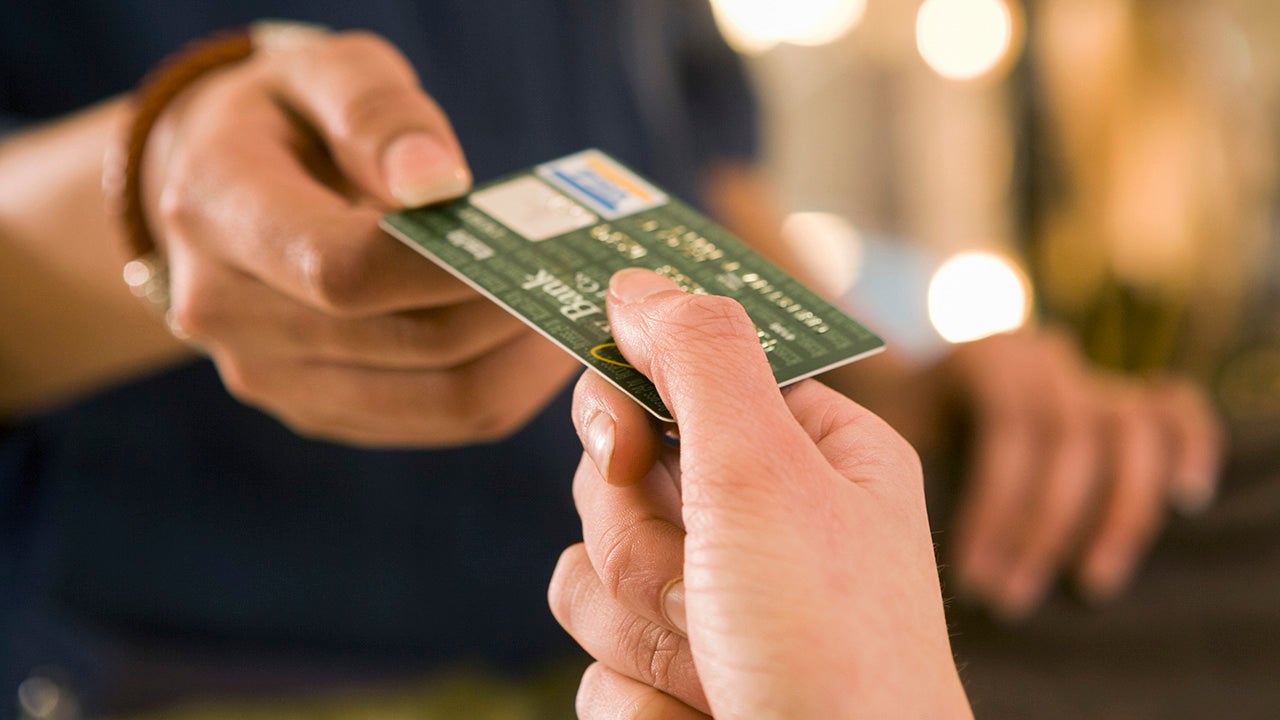Do magnets affect credit cards?

Key takeaways
- Prolonged exposure to magnets can affect the functionality of your credit card.
- Cards with magnetic strips can also become demagnetized due to dirt, scratches and other damage.
- EMV chip technology has largely replaced the magnetic strips on credit cards and is not vulnerable to demagnetization.
When you swipe or insert your credit card into a card reader, the card reader receives information like your account number and credit limit. If the magnetic strip on your card is damaged, the card reader won’t be able to retrieve the information it needs to approve the purchase. The process of a magnetic strip losing its ability to communicate this information is called demagnetization.
Scratches and general wear are common causes of demagnetization, but prolonged exposure to magnets can also ruin a card’s magnetic strip. Fortunately, you don’t need to worry about magnetic damage if your credit card has an EMV chip. This newer chip technology has nearly replaced magnetic strips and isn’t susceptible to magnet damage.
Do magnets mess up credit cards?
The data stored on the magnetic strip of your credit card includes your name, account number, expiration date, credit limit, card number and card usage information. The strip also carries an encrypted pin, country code and information about currency units.
Magnets can erase or scramble that information, which can interfere with your ability to make a purchase. However, a magnet’s exact effect on a credit card depends on a variety of factors, including the length of exposure and distance from the card.
The longer a card is exposed to a magnet (usually an inch or closer), the more likely the magnet is to erase information on the magnetic strip. Thankfully, it may take multiple, long-term interactions with a magnet to cause harm to your card.
Types of magnets that may harm credit cards
Magnetic money clips and cellphone holders can make transporting your cards more convenient, but they may cause damage after some time. In some cases, money clips have magnets on both sides, making it difficult to create a necessary buffer or distance between your card and the magnets, even if a leather strip is present.
Cellphones, on the other hand, have very small magnets inside, meaning the outer shell of the phone can act as a buffer between your cards and keep them safe from potential damage.
In general, it’s better to keep your cards in a wallet that will provide some protection from demagnetization. It’s also good practice to face card magnetic strips away from any magnets that may be around, like those on a refrigerator or purse clasp.
Although smaller magnets can be an issue, they are fairly unlikely to cause damage to your card’s magnetic strip. On the other hand, the strong electromagnetic fields created by certain machines and medical devices — like microwaves and MRI machines — can easily damage your card. It’s best to avoid bringing your cards near these devices to prevent possible damage.
Other types of card damage
Keeping your card’s magnetic strip away from magnets is one way to take care of your credit card, but magnets aren’t the only cause of damage.
Magnetic strips and EMV chips can sustain damage from being scratched, for example, by a key or coin. These scratches can make it difficult for card readers to pick up the information on the magnetic strip and can cause a card to eventually be unusable. Dirt and oils can also cause issues with your magnetic strip, while prolonged exposure to liquids may also damage EMV chips — although most credit and debit cards utilize water resistant designs.
Keep in mind: Your card’s magnetic strip can also be damaged by heat. Exposure to heat can cause the card to become malformed, which could damage the magnetic strip. This type of damage can be caused by leaving your card sitting out in the sun or in a hot car for extended periods of time.
EMV chips are magnet-safe
Nowadays, you don’t have to worry much about magnets damaging your credit card because magnetic strips have become nearly obsolete. Instead of a magnetic strip that you swipe, most credit cards now have an EMV chip that you insert into a card reader or even use to pay contactlessly.
Luckily EMV chips aren’t affected by magnets. However, scratches or prolonged exposure to water can cause damage or make them stop working altogether.
What to do if your card is damaged
If your credit card becomes damaged, contact your issuer right away to report the issue. Your issuer may be able to troubleshoot the problem with you to get the card working again. If that isn’t possible, the issuer can at least offer you a replacement card.
Replacement cards usually take about three to seven business days to arrive. If you need to use your card before then, you can ask your issuer to expedite the shipping of your replacement card or possibly request a virtual card.
What can you do to avoid damaging your credit card?
Although demagnetizing your credit card is fairly unlikely, it can happen. Here are some ways to protect your card and avoid damaging the magnetic strip:
- Avoid storing your credit card near magnets or other magnetic items. If your purse or wallet has a magnet on it, ensure the magnetic strip on your card faces away from the magnet to help avoid damage.
- Use a money clip to carry cash only, not credit cards. This is especially true if the money clip is magnetic. Money clips can also expose your cards’ magnetic strips to items that may scratch or damage them. Protect your cards inside a wallet, instead.
- Avoid carrying your cards loose inside your pocket, especially if you carry items like keys and coins in the same pocket. These items can scratch the magnetic strip on the card and damage it.
- When storing multiple cards in one place, ensure the magnetic strips are facing away from each other. This includes storing them in your wallet. Prolonged exposure to other magnetic items can cause damage.
- Avoid bringing your card near machines and devices that create a strong electromagnetic field. Examples include MRI machines and microwave ovens.
- Don’t leave your card in a hot car or laying directly in the sun. Excessive heat can warp your card, which could damage the magnetic strip.
The bottom line
Although it’s more likely that your credit card isn’t working due to other reasons (such as scratches, warping or account issues), it’s clear that magnets and credit cards don’t play nicely together. Following the best practices to protect your card from demagnetization is always a good idea.
With that said, credit and debit cards with magnetic strips are quickly becoming obsolete. You can avoid problems with your magnetic strip by switching to a more modern card with an EMV chip. While not foolproof, these cards tend to provide a higher level of security while avoiding the problems associated with magnetic strips.






